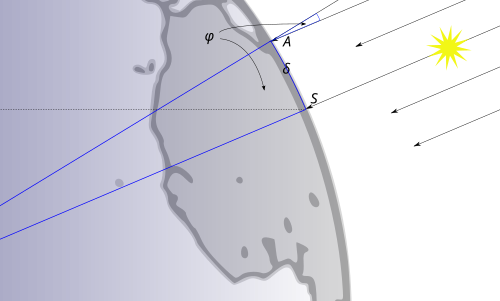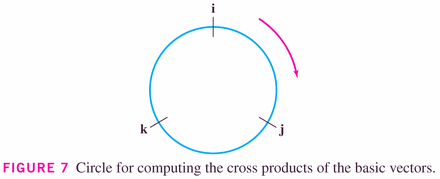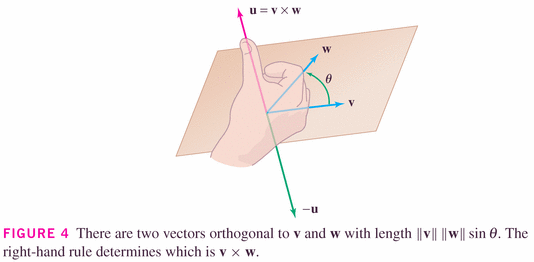- Return of your homework:
- 10
- 14
- 36
- You have a homework due today, over 12.2.
- Quiz Opportunity over section 12.4
- You do have an exam next Thursday: it will cover everything up through 12.3 since our last exam.
- An example problem, in which we need a "shadow casting" function: Eratosthenes and the calculation of the radius of the Earth.

-
Now let's think a little more about how we resolve the vector forces into components: we'll find it convenient to define a product of two vectors as follows:

(how would you define this for vectors in two-space?). It's just component-wise multiplication, and we add up the results.
examples:
- #1, p. 830
- #5
- #11
It turns out that

where




Otherwise, the angle is acute. examples:
- #15, p. 830
- #17
Finally then, we can put it all together to get this:

In a way, this is the "shadow" of vector u along v's direction (notice that v's length has been accounted for, by using the unit vector in the v-direction).
- Additional examples:
- #49, p. 831
- #51
- #57
- The next product we'll find convenient to define is the cross
product, which is a product of two vectors resulting in a third vector,
which juts into the space perpendicular to which the two vectors live.
It is only defined (and useful) in three-space, which makes it somewhat unusual (the dot product exists and is useful in any dimensional space).
The cross product is linear in its components: that is,
This means that we can define it on the unit vectors in three space, and then deduce it using the component-wise definition of a three-vector.

- #5, p. 838
Now: here are the important geometric (rather than simply algebraic) properties of this product:

for the dot-product, it's the cosine; for the cross-product, it's the sine.

The "absolute values" in this case represent determinants, which, for a 2x2 system with first row a, b and second row c, d is given by
. So the computation above works out to
Example:
- #7, p. 838


Examples:
- #15, p. 838
- #33, p. 839
- Torque: #39
- Torque: #41
- A cross-product (and dot product) worksheet